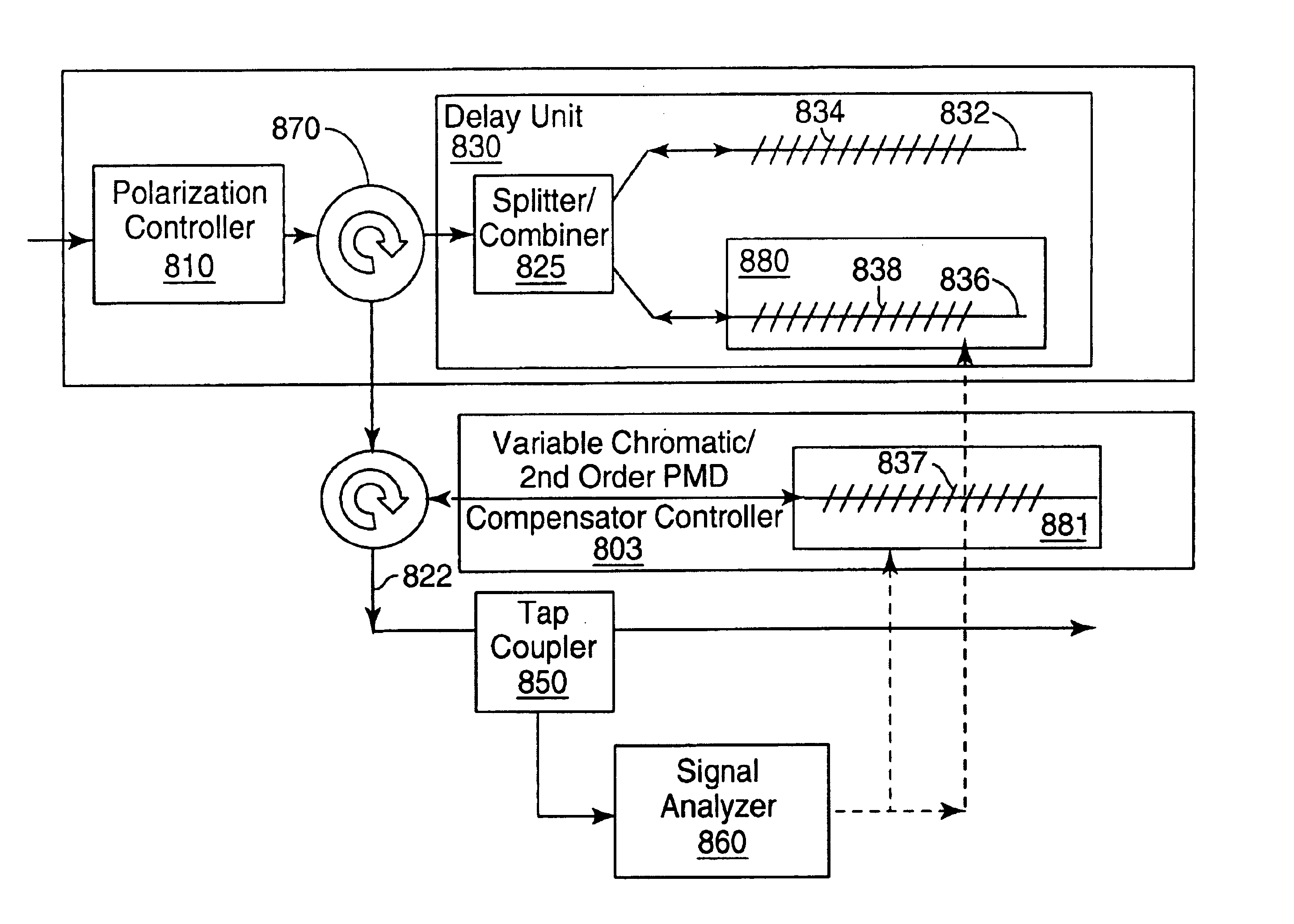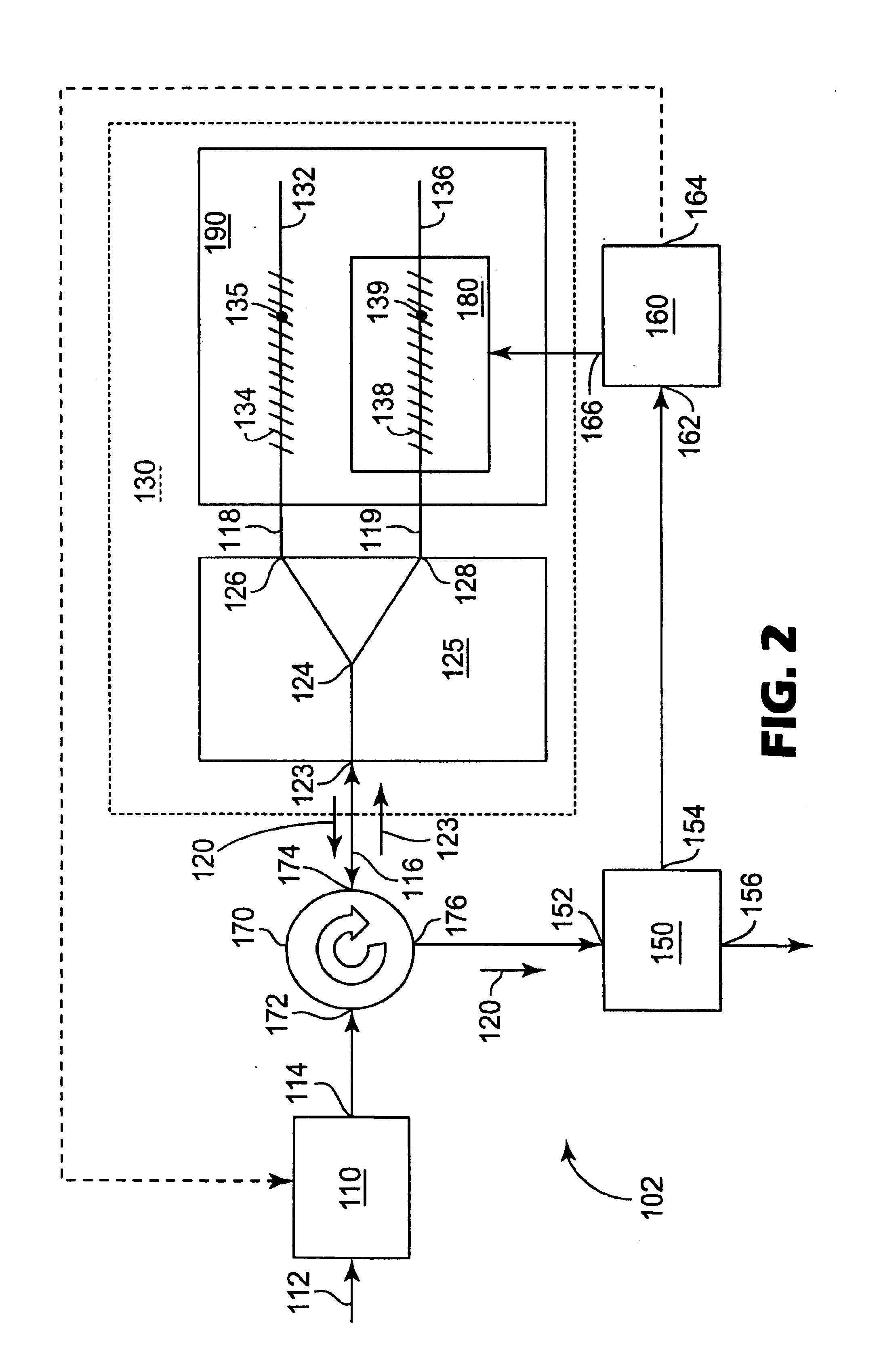Method for polarization mode dispersion compensation
a technology of optical signals and dispersion compensation, applied in multiplex communication, instruments, optical elements, etc., can solve the problems of signal degradation, more complex optical signal effect, and pulse spreading
- Summary
- Abstract
- Description
- Claims
- Application Information
AI Technical Summary
Benefits of technology
Problems solved by technology
Method used
Image
Examples
Embodiment Construction
[0034]The present invention is directed to a method for compensation and a system for compensation for polarization mode dispersion (PMD). FIG. 1 illustrates a component flow diagram of a method for compensating for polarization mode dispersion of an incoming optical communications signal 12. A polarization controller 10, that adjusts the state of polarization to minimize the distortion of the signal, receives the incoming signal 12. The output 14 of the polarization controller 10 is optically coupled and aligned to a differential polarization delay unit 30, which includes a polarization splitter 20, a differential delay line 90 and a polarization combiner 40. The polarization splitter 20 receives the output 14 and splits the communication signal into a first and a second orthogonal state of polarization 22. The polarization states 22 are directed into the differential delay line 90 that compensates for PMD by delaying the “fast” component of polarization with respect to the “slow” ...
PUM
 Login to View More
Login to View More Abstract
Description
Claims
Application Information
 Login to View More
Login to View More - R&D
- Intellectual Property
- Life Sciences
- Materials
- Tech Scout
- Unparalleled Data Quality
- Higher Quality Content
- 60% Fewer Hallucinations
Browse by: Latest US Patents, China's latest patents, Technical Efficacy Thesaurus, Application Domain, Technology Topic, Popular Technical Reports.
© 2025 PatSnap. All rights reserved.Legal|Privacy policy|Modern Slavery Act Transparency Statement|Sitemap|About US| Contact US: help@patsnap.com



